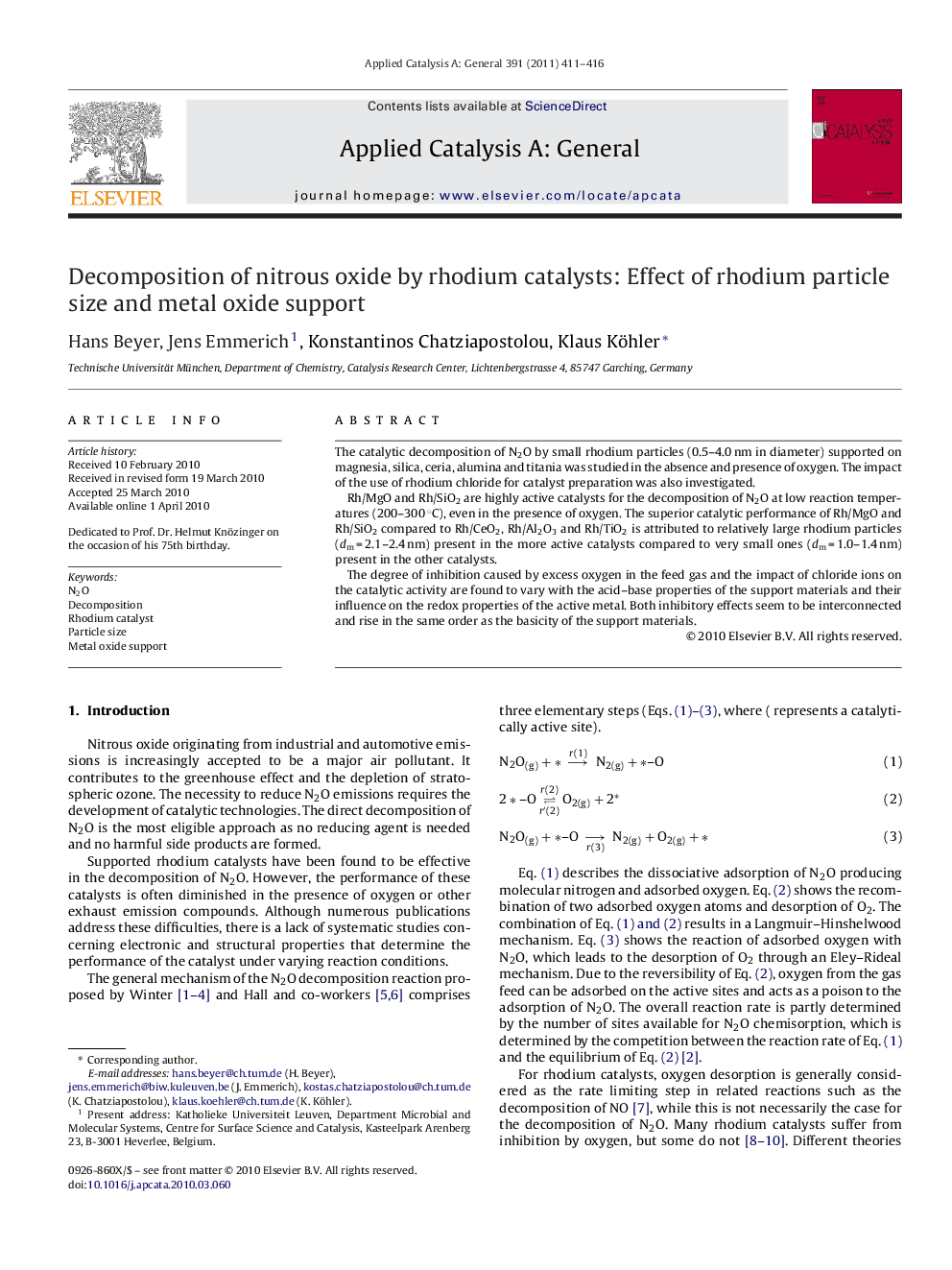| Article ID | Journal | Published Year | Pages | File Type |
|---|---|---|---|---|
| 41664 | Applied Catalysis A: General | 2011 | 6 Pages |
The catalytic decomposition of N2O by small rhodium particles (0.5–4.0 nm in diameter) supported on magnesia, silica, ceria, alumina and titania was studied in the absence and presence of oxygen. The impact of the use of rhodium chloride for catalyst preparation was also investigated.Rh/MgO and Rh/SiO2 are highly active catalysts for the decomposition of N2O at low reaction temperatures (200–300 °C), even in the presence of oxygen. The superior catalytic performance of Rh/MgO and Rh/SiO2 compared to Rh/CeO2, Rh/Al2O3 and Rh/TiO2 is attributed to relatively large rhodium particles (dm = 2.1–2.4 nm) present in the more active catalysts compared to very small ones (dm = 1.0–1.4 nm) present in the other catalysts.The degree of inhibition caused by excess oxygen in the feed gas and the impact of chloride ions on the catalytic activity are found to vary with the acid–base properties of the support materials and their influence on the redox properties of the active metal. Both inhibitory effects seem to be interconnected and rise in the same order as the basicity of the support materials.
Graphical abstractThe catalytic decomposition of N2O by small rhodium particles (dm = 1.0–2.4 nm) supported on various metal oxides was studied in the absence and presence of oxygen in the feed gas and chloride on the catalyst surface. The superior catalytic performance of Rh/MgO and Rh/SiO2 compared to Rh/CeO2, Rh/Al2O3 and Rh/TiO2 is attributed to relatively large rhodium particles (dm = 2.1–2.4 nm). The degree of inhibition caused by oxygen and chloride is found to vary with the acid–base properties of the support materials.Figure optionsDownload full-size imageDownload high-quality image (131 K)Download as PowerPoint slide
